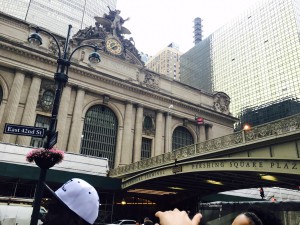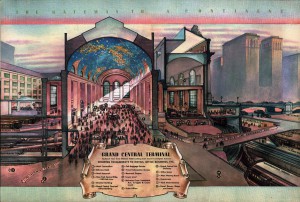After the Transit Archive visit, I feel like I have a better grasp distinguishing between a primary and secondary sources. I was very impressed by the amount of security and protection the archivist handled their collection and the knowledge the accompanies this job. It is not just simply placing old things in a basement and locking them away, but there is a science that must be well understood. For example, its important to understand that temperature and light( incandescent,natural,fluorescent..) can emphatically damage an item from oxidation or even reactivity of volatile chemicals. Even the enzymes naturally secreted by our sweat glands and sebaceous glands can taint the quality of the item.
I was upset that we spent very little time browsing over the content, but one thing I found truly unique were the advertising images that once stood over GC and around time square. To me they seem more of an art rather than some cheesy ad like we now see today. I guess you weren’t allowed to place any “junk” around especially if it is going to be display over GC. Viewing old images of time square you can see how the structure and the space was destined for that area to be of high significance later in time and i wish my parents or grandparents would have been savvy enough to purchase space/real estate there!
Some of the content were difficult to cite as they were lacking information:
The Gateway to a Continent. (1940). New York, New York City Architects. NY Transit Archive. 130 Livingston Street Brooklyn, NY 11202. 17 June 2016.
This was a book that contained advertising images of fancy hotels that were distributed downtown and around Grand Central around the 1940s.





